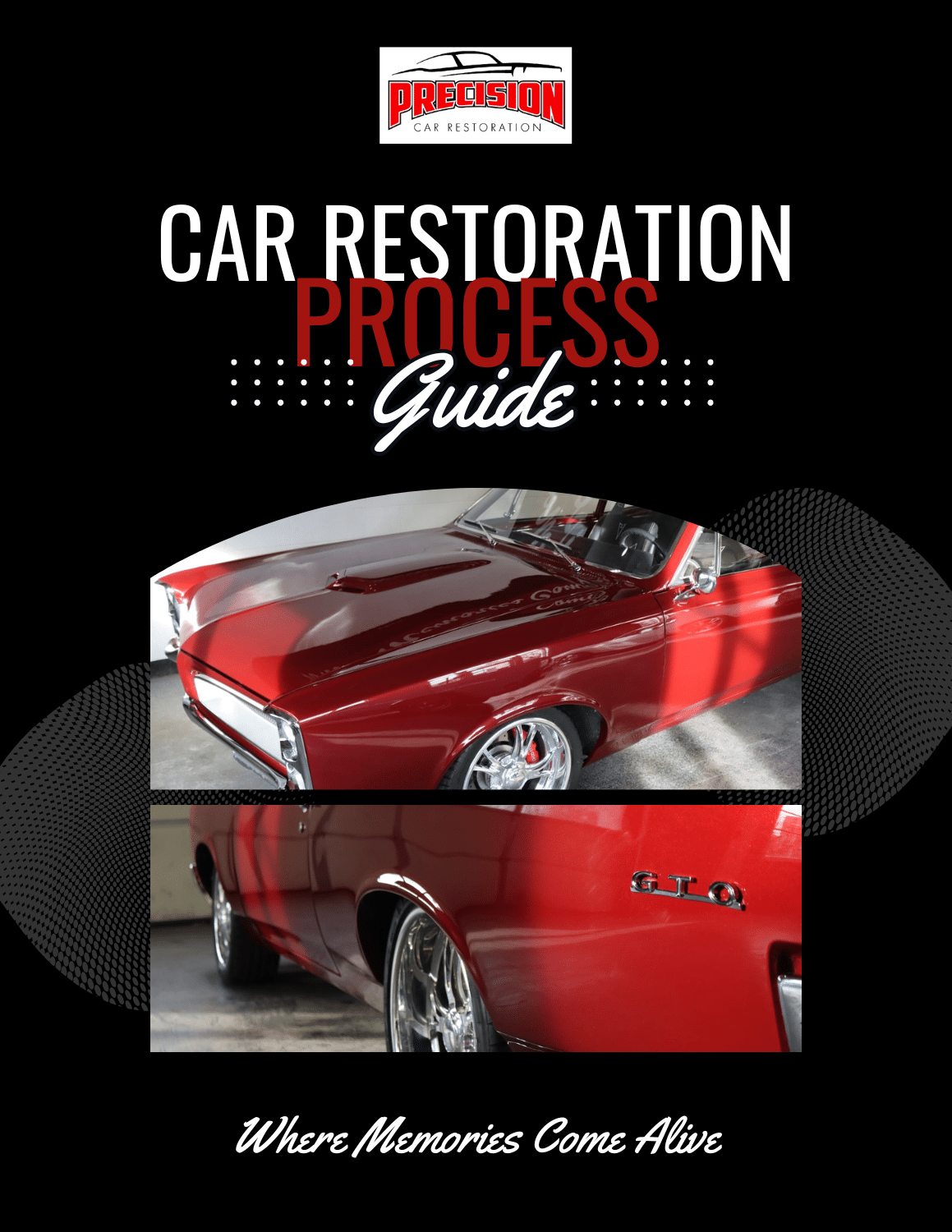Prepping a musclecar restoration project for paint and body work is a painstaking yet incredibly important process. Even before the first droplet of paint can hit the surface, hours of prep work are a must to ensure the best results possible. After you’ve spent thousands of dollars on sheetmetal repair and paint materials, the last thing you want to do is risk compromising the entire restoration project due to shoddy prep work. Cleaning and sanding the paint surface represent two of these critical steps. Here’s how it’s done.

1) Wash the vehicle surface with soap and water thoroughly before starting any work. This will remove road grime that has accumulated over the years. Do not use any soap that contains sealers or waxes since they can lead to the formation of fisheyes in finish of the new paint.
2) Remove as may bolt-on parts as possible including door handles, moldings, taillights, and emblems. Not only does this make the masking process easier, but it also allows removing the existing paint more thoroughly. This improves paint adhesion and reduces the possibility of the new paint flaking. If it’s not possible to remove windshields, it may be necessary to use lifting tape. This product wedges under the flexible moldings, and allows for access to the painted surfaces that need prepping.

3) Wipe down the body surface using a quality wax and grease remover before any sanding takes place. Make sure that the wax and grease remover is applied with one towel, and that it’s dried off with a separate towel. This ensures that any remaining contaminates are removed and not merely spread around the panels.
4) Finish-sand the paint with different grits of sand paper depending on if color and clearcoat are being applied, or if a panel is simply being color blended. For base/clear coat applications, first sand the paint with 400-grit paper. A dual-action sander with a foam backup pad is the preferred tool for this step. Avoid breaking through the clear coat, as this increases the chance of lifting.
5) Next, lightly sand the surface with 600-grit paper. Make sure all of the shininess of the old clearcoat is gone while still trying to remove any shine the old clear may have. To access the inside edges, corners, and other hard-to-reach places, a use a gray Scotch-Brite pad.

6) If the basecoat is in good shape, applying a fresh coat of clear can restore a paint’s luster to like-new condition. To do this, remove the old clearcoat using a dual-action sander 1,000-grit paper, and a foam backup pad. The goal is to remove all traces of shine from the paint surface. Again, gray Scotch-Brite pads work in for hard-to-reach areas.
7) After all sanding has been completed, blow off all the dust and wash the surface with a wax- and sealer-free soap and water. Dry off the surface, then scuff away any remaining shiny spots with a Scotch-Brite pad.
8) Wipe down the vehicle surface one final time before painting, as contaminants can transfer from your hands onto the paint surface. Use one damp rag to wipe the surface with, then use a second clean rag to dry it off. Next, wipe down the surface with a quality wax and grease remover.
9) Finally, with the surface finish prepped it’s now ready for masking


